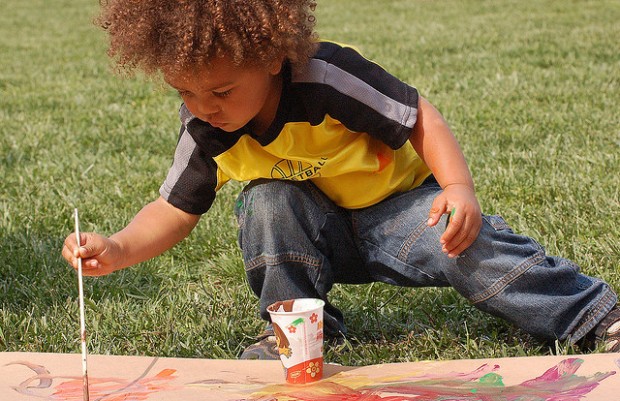Instead Kaufman and Beghetto favor what they call the 4 Cs. They'd like to include “mini C” moments, when one has a flash of inspiration or insight that is personally meaningful, but might not matter to anyone else, and “pro C” moments, when someone is an expert in their domain, but the full potential impact over time can't have been determined yet. With this more complete spectrum of creativity it’s easier to imagine becoming more creative. And, according to the researchers, to move from a “mini C” idea to a “little C,” all that’s needed is some feedback. And to move from “little C” to “pro C” a person just needs practice. Much harder is to move from “pro C” to “big C” because only time will tell what becomes legend. Still with us? Keep reading.
With creativity comes uncertainty, which many teachers would prefer to keep out of their classrooms. And, while everyone says they want creative thinkers, creativity isn't rewarded at the “mini-C” and “little-C” levels. Often the kids who operate at those levels are the ones considered to be distracting the class or straying off track. Because society favors the pro and big-C levels, it’s harder to nurture those lower levels.
But it's important to recognize that students can't get to be a legendary creative genius without having their creativity nurtured along the way -- recognizing the "little C's." But that takes a shift in thinking for not just educators, but society at large -- that there's value in creativity beyond becoming the next Van Gogh.
[RELATED READING: Five Ways to Bring Innovation Into the Classroom]
The result in classrooms is an either/or scenario in which "creativity" equals curricular chaos while "learning" equals mind-numbing conformity. An experienced teacher knows learning can exist alongside creativity and that uncertainty can lead to an opportunity. Beghetto sees the same fear of uncertainty with prospective educators who haven’t even had their own classroom yet. “When an uncertain moment appears, they don’t see that as an opportunity for creativity to manifest, they see it as an indicator of their own incompetence,” he said. Instead, they prefer to get expected responses to their questions – unexpected answers derail the class.
When kids leave high school, they become experts in what Beghetto calls the “asking known-answer-question syndrome.” They've learned it’s not really about how they understand it; it’s about how the teacher understands it and how she wants to hear it. That, then, becomes the definition of the "educated mind."
Kaufman and Beghetto suggest teachers should meet unexpectedness with curiosity. Rather than shutting down a potentially creative solution to a problem, explore and evaluate it. What seems like a tangent could actually help other students think about the problem in a different way.
They also note that part of incorporating creativity is helping students to read the situation. There’s a time and a place for a creative solution and kids need to learn when it’s appropriate to take the intellectual risk. They should also learn that there’s a cost to creativity; it takes effort, time, and resources and depending on the problem the most creative solution may not make sense.
[RELATED READING: Are We Wringing the Creativity Out of Kids?]
This discussion may seem removed from the rubrics and standards that dictate teachers’ lives, but Kaufman and Beghetto argue that fostering creative thinking is not mutually exclusive to meeting standards.
“We do need academic domain knowledge in order to be creative,” Beghetto said. “The standards can serve as guideposts, but these should not be the end that we are driving towards.” They argue that constraint is always present in creativity and that something like memorization can provide the tools for improvisation within a discipline.


